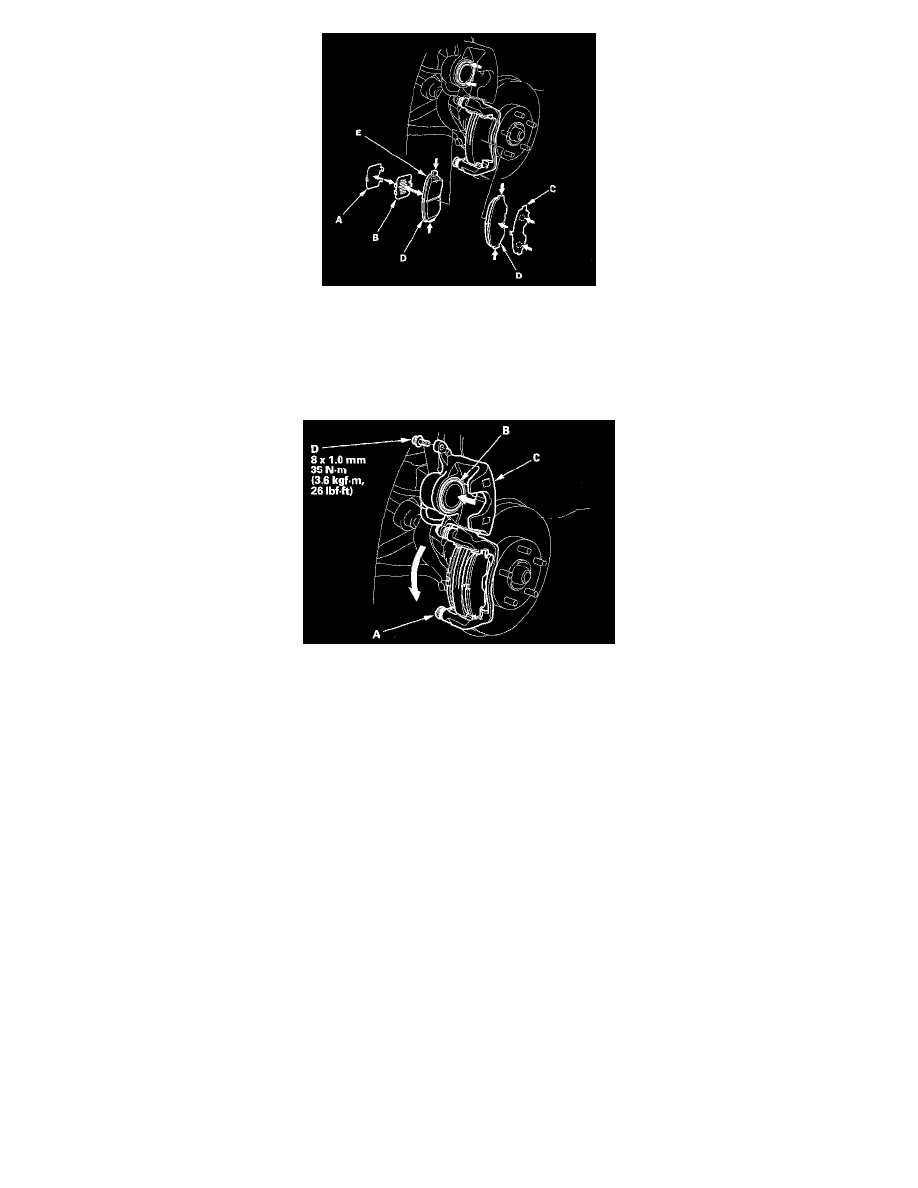Accord V6-3.0L Hybrid (2005)

10. Apply a thin coat of M-77 assembly paste (P/N 08798-9010) to the pad side of shim outer pad shim C, inner pad shim B, both sides of inner pad
shim A, the back of brake pads (D), and to the other areas indicated by the arrows. Wipe excess assembly paste off the pad shims and brake pads.
Contaminated brake discs and pads reduce stopping ability. Keep assembly paste off the brake discs and brake pad material.
11. Install the brake pads and pad shims correctly.
Install the brake pads with the wear indicator (E) on top.
If you are reusing the brake pads, always reinstall the brake pads in their original positions to prevent a momentary loss of braking efficiency.
12. Push in the piston (B) so the caliper will fit over the brake pads. Check the brake fluid level. The brake fluid may overflow if the reservoir is too
full. Make sure the piston boot is in position to prevent damaging it when pivoting the caliper down.
13. Pivot the caliper (C) down into Position. Install the flange bolt (D), and tighten it to the specified torque.
14. Install the brake hose mounting bolts, and tighten then to 9.8 Nm (1.0 kgf-m, 2.2 ft. lbs.).
15. Press the brake pedal several times to make sure the brakes work.
NOTE: Engagement of the brake may require a greater pedal stroke immediately after the brake pads have been replaced as a set. Several
applications of the brake pedal will restore the normal pedal stroke.
16. After installation, check for leaks at hose and line joints or connections, and retighten if necessary. Then test-drive the vehicle.
